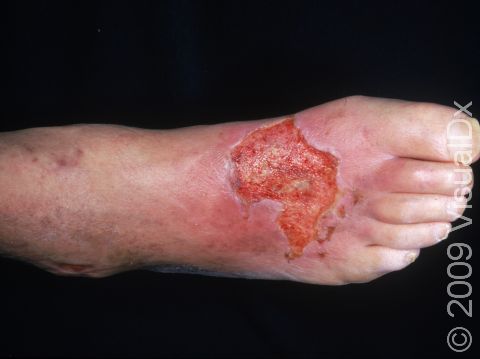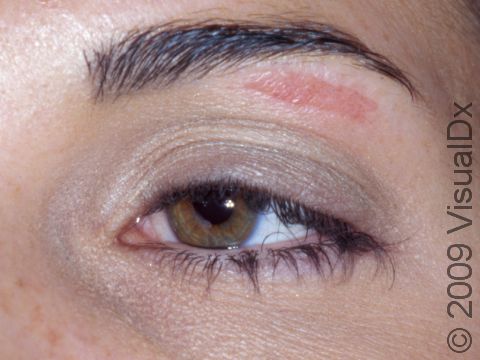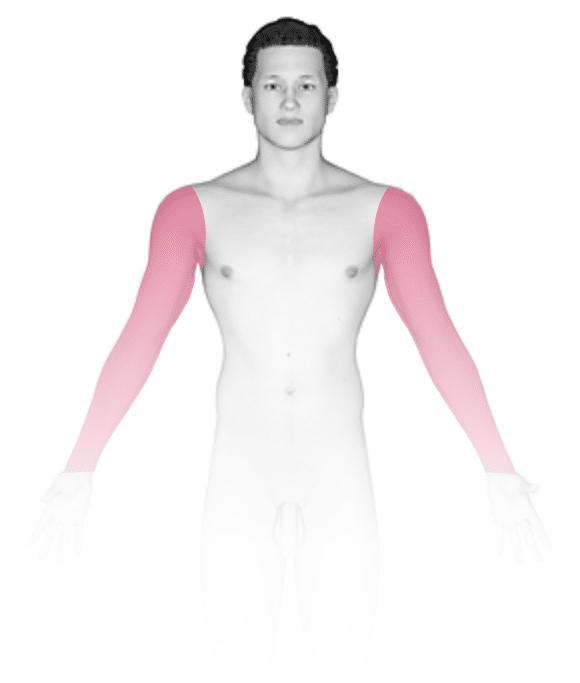Sizzling bacon grease is a dangerous kitchen hazard. If you’ve suffered a bacon grease burn, you likely want quick relief. Treating the burn properly can speed healing, reduce pain, and prevent infection. But what exactly should you put on a bacon grease burn?
In this article, we’ll cover the best remedies and treatments to apply to bacon grease burns based on medical recommendations. Read on for a detailed guide on how to treat your injury for optimal recovery.
First Aid for Bacon Grease Burns
If you’ve been burned by hot bacon grease, follow these immediate first aid steps
-
Run cool water over the burn for 10-20 minutes to reduce temperature and pain, Use a gentle stream—high pressure may worsen tissue damage,
-
Remove jewelry or tight clothing near the burn, as swelling may occur.
-
Do not apply ice, as this can cause further injury
-
Do not break any blisters, which increases infection risk.
-
Take an over-the-counter pain reliever like ibuprofen or acetaminophen.
-
Seek emergency care for large, severe burns.
Quickly cooling the burn is crucial to limit damage and discomfort. But certain actions like icing can disrupt healing, so first aid is about more than just running water.
What to Apply to Bacon Grease Burns
After immediate first aid, treating the wound properly can speed healing. Here’s what to put on a bacon grease burn:
-
Aloe Vera: The cooling, anti-inflammatory properties of aloe vera gel help soothe burned skin and relieve pain. Applying generously after first aid promotes healing.
-
Antibiotic Ointment: Over-the-counter antibiotic creams containing bacitracin or neomycin reduce infection risk. Apply a thin layer 2-3 times per day.
-
Burn Creams: Look for creams containing lidocaine, pramoxine, or benzocaine to ease pain and inflammation. Use as directed on the package.
-
Honey: Honey’s antimicrobial traits prevent infection. Use medical grade honey and cover with gauze after applying.
-
Essential Oils: Diluted lavender, tea tree oil, or eucalyptus relieve pain and may aid healing through anti-inflammatory effects.
Avoid using butter or egg whites, which can increase risk of infection. See your doctor if pain persists after a few days of home treatment.
How to Treat Minor Bacon Grease Burns
For mild first-degree grease burns limited to redness and pain, follow this treatment plan:
- Rinse with cool water for 10-20 minutes. Gently pat dry.
- Apply a thin layer of aloe vera gel. Reapply every few hours.
- Cover with a loose sterile bandage or non-stick gauze.
- Take over-the-counter pain medication as needed.
- Watch for signs of infection like pus, increasing pain/swelling, fever.
This conservative approach helps minor burns heal within a week. The aloe vera soothes pain while keeping the wound moist to prevent scabbing.
Treating Moderate to Severe Burns
For deeper and more severe grease burns with blisters or thickness damage, see your doctor. Treatment guidelines include:
-
Professional wound cleaning to remove debris and dead tissue. This prevents infection.
-
Antibiotic ointment and sterile dressings changed daily, or antibiotic creams.
-
Pain medication stronger than over-the-counter options.
-
Possible skin grafting for very deep third-degree burns.
-
Physical therapy if needed to maintain mobility after serious burns.
Do not try to debride or treat severe burns at home. Seek emergency care even before first aid for very large or deep burns.
Preventing Scars After a Grease Burn
To help prevent scarring:
-
Leave blisters intact—popping them increases scarring risk.
-
Keep the wound moist with antibiotic ointment to avoid scab formation.
-
Once healed, massage daily with cocoa butter, aloe, or vitamin E oil for up to 6 months.
-
Wear sunscreen on the site for at least a year as sunlight can worsen scars.
-
Consider a dermatological scar treatment like laser therapy for severe scarring.
Early, proper treatment gives you the best chance of avoiding noticeable long-term marks from a grease burn.
When to See a Doctor for a Grease Burn
Consult a doctor or seek emergency care if:
-
The burn is larger than 3 inches in diameter
-
It covers the face, hands, feet, joints or genitals
-
Burned area appears white or charred, which indicates deep tissue damage
-
You develop signs of infection like fever, increasing redness/swelling, pus
-
Over-the-counter remedies provide no relief after a few days
-
Burn causes severe pain, numbness, or difficulty moving
Severe grease burns require professional medical treatment to properly heal and avoid complications like scarring or needing skin grafts.
Preventing Bacon Grease Burns
To avoid these painful injuries:
-
Wear long sleeves and oven mitts when cooking with hot grease.
-
Allow grease to cool before attempting to dispose of it.
-
Pour cooled grease into a metal container like an empty can. Never pour down the sink.
-
Keep kids away from cooking areas when using hot oil or grease.
-
Turn pot handles away from edges and clean up spills immediately.
With proper safety, you can enjoy cooking with grease while avoiding burns. But if an accident happens, now you know exactly what to put on a bacon grease burn to promote healing.

Images of Burns, First Aid (


Burns happen when skin comes into direct contact with or is exposed to very hot or cold temperatures, friction, electricity, chemicals, or electricity. First-degree burns are superficial with red skin, pain, and no blistering. Second-degree burns involve destruction of the second layer of skin, causing blistering, swelling, and pain. Third-degree burns involve destruction of all layers of the skin, including fat, muscle, blood supply, and sometimes bone. Third-degree burns do not have pain associated with them.
People usually get airway burns from breathing in smoke, steam, or toxic fumes. These burns can happen in the nose, throat, or windpipe. The airway swells, which can cause suffocation. It is often difficult to determine the extent of airway burns.
When trying to figure out how bad a burn is, which is mostly based on its size and depth, it’s important to do so. When in doubt, treat as a serious burn.
All first-degree and second-degree burns that are less than 2 to 3 inches across are called minor burns, and the First Aid Guide below tells you how to treat them. Seek professional medical care for burns that do not fit the above criteria.
First Aid Guide General self-care measures for minor (first-degree and some second-degree) burns are as follows:
- Run cold water over the hurt area or soak it in cold water for 10 to 15 minutes. Important: Do not put ice on the burn directly unless it is in the mouth.
- Scrub the area dry with a clean or germ-free cloth and put a clean, dry, non-sticky dressing over it.
- Pain killers like acetaminophen (Tylenol), ibuprofen (Advil, Motrin), naproxen (Aleve), or aspirin can help. However, aspirin should never be given to kids or teens younger than 18 years old.
- Keep putting on clean, dry bandages and change them every day until the burn is healed.
For severe (extensive second-degree and all third-degree) burns, contact emergency help immediately. While awaiting professional medical care, self-care measures are as follows:
- Do not come into contact with smoke or heat again. Do not take off the person’s clothes or put cold water on the burns.
- Conduct CPR if necessary.
- Put a cool, wet cloth or bandage over the hurt area.
Chemical burns need immediate first aid while waiting for medical care. This can lessen the harmful effects of the chemical. Your local Poison Control Center can best provide this information. The following general measures can be taken while awaiting professional care.
- Take off any clothing or other items that the person who came into contact with the chemical had on. Be careful not to spread the chemical to other places.
- Continually flush the affected area with fresh water.
- After 15 minutes, put cool, wet compresses on the area to help ease the pain.
- Cover the burn with a loose, dry, sterile bandage to keep it from rubbing.
Note: Do not leave the victim alone, and watch for signs of shock.
If you get burns in the eyes, you should see a doctor if the white part around the eye swells, if you have trouble seeing, or if the burn is otherwise serious. General first aid is as follows:
- Clean the eyes with cool water; stop using water if it hurts.
- Using light pressure, apply a cool compress to the eye.
Note: Do not rub the eye, and do not cough or breath on the burn.
Burns affect all people of all ages, races, and sexes.
Burns can happen at any time.
Depending on how bad the burn is, it can look different, but most burns leave behind red, white, or charred skin that peels, swells, and blisters.
- Minor burns are the size of a quarter or smaller. Burns of the first or second degree that are less than 2 to 3 inches across and not on the hands, feet, face, groin, buttocks, or over a major joint are called minor burns.
- Burns that are very bad are deep and may cover a lot of body or more than one area. Second-degree burns on the hands, feet, face, groin, buttocks, or over a major joint that are bigger than 2 to 3 inches are severe burns. The same goes for ALL third-degree burns.
Burns on the airways can look like a charred mouth, burned facial hair, burns that can be seen on the head, face, or neck, and coughing or trouble breathing.
The physician will likely determine the extent of the burn. In the case of an airway burn, bronchoscopy or lung scan may be done. A germ-killing solution will be used to clean the wound. If needed, the dressing will be changed, and care instructions for at-home use will be given. If necessary, a tetanus vaccine will be given and surgical procedures will be discussed (eg, skin grafts).
Get medical help right away if you have a third-degree burn or a second-degree burn that is more than 2–3 inches across, on your hands, feet, face, groin, buttocks, or over a major joint. Do not decide if you need to see a doctor based on how much pain you are in; most severe burns are not painful.
If a burn has caused shock, which looks like pale, sweaty skin, blue lips and fingernails, less alertness, and general weakness, you should get medical help right away.
Get medical help right away if a burn shows signs of infection, like more pain, redness or red streaks going toward the heart, swelling, discharge, or swollen lymph nodes.
Last modified on June 1st, 2023 at 11:46 am

What To Do For a Grease Burn | OSUWMC Comprehensive Burn Center
FAQ
What is the immediate treatment for grease burn?
What ointment is good for hot oil burns?
Does Vaseline help grease burns?
How do you treat a grease burn?
For severe grease burns, taking plenty of medication and undergoing reconstructive surgery is essential. False, because the correct statement is: It was wrong to treat his burn using a moisturizer with aloe vera. False, because the correct statement is: As an immediate treatment, he should rinse or cool the affected area using tap water.
Is a hot grease burn a second degree burn?
Burns caused by hot grease are second-degree burns and require proper care to prevent infection or scarring 1. Depending on the severity of the grease burn, different methods of treatment are recommended. As always, if you have questions or concerns, contact a medical professional for assistance.
How do you get a splatter of grease on a stove?
You turn on the stove, put a little bit of vegetable oil on the skillet so the food doesn’t stick, and then you gently add the food. The next thing you hear is the popping sound of the oil and you feel the splatter of the hot grease causing pain all over your hands and arms. To unlock this lesson you must be a Study.com Member.
How do you treat a burn with antibiotic cream?
Spread a thin layer of an antibiotic cream over the burn then carefully dress the burn with the clean bandage. It is very important that you give proper attention to your burn in order to prevent infection. Use care when removing the old bandage and soak it to assist in removing if it is sticking to the burn.
Are grease burns serious?
Grease burns that are about 4 inches in diameter are considered serious. True | False 9. The affected area must be kept clean; the bandages should be replaced from time to time. True | False 10. For severe grease burns, taking plenty of medication and undergoing reconstructive surgery is essential.
Can you cook with bacon fat?
Bacon fat is loaded with smoky flavor, meaning you can save it and use it for cooking, where it will enhance everything from baked goods to corn on the cob—even a grilled steak . Of course, if you’re not into cooking with bacon fat, we’ll also show you how you can safely and properly dispose of it.
